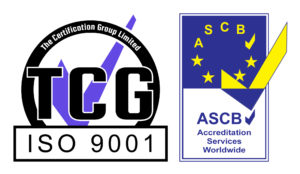A Guide to Self-Levelling Floor Compound
Self Levelling Floor Compounds
Hi, I’m Andy Parkin, Managing Director of Speed Screed, a Multi-Award Winning Company based in the UK. In this article, I am going to look at how self-levelling floor compounds can help you remove any small imperfections in your floor base before laying final floor coverings.
Things to consider when using self-levelling floor compounds
These compounds can be used with almost every kind of screed or concrete substrate, but remember to always consider each installation case by case.
Substrate preparation must also be considered – as with every other type of screed placement the area must be kept free of dirt, dust and any other contaminants because these prevent proper adhesion.
Pay attention to the thickness: Although some exceptional self-levelling floor compounds can cope with depths up to around 50mm, the majority can only be used for depths of 30-40mm and these often need multiple applications or additives. All self-levelling floor compounds should be used following the manufacturer’s instructions and with the knowledge that increasing the thickness will lead to a commensurate increase in drying times. Normal thicknesses used range from 1-15mm.
Before application, you should ensure that the base layer is completely dry and stable and that any damp proofing membranes have been installed if needed.
Think about priming: Regardless of use most floors will need to be primed to help ensure the best adherence of the self-levelling floor compound to the substrate.
Self-levelling floor compound is really easy to apply. It is possible to use a notched trowel or skid-leveller but it is wise to check with the manufacturer to see what their recommendations are before applying the compound.
Finishing the floor
It is generally not suitable to be used as the wearing surface so the floor will always need to be finished with a suitable covering layer (there are specialist wearing toppings available). This can be carpet, laminate, vinyl, tiles or a multitude of other choices. Before the compound is completely dry any irregularities should be smoothed out using a trowel and spiked roller to release any trapped air.
It is vital to make sure the self-levelling compound layer is completely dry. Setting times can vary according to the product and environmental conditions, always consult the manufacturer’s guidelines and leave the appropriate amount of time based on the thickness of the layer and the weather and other conditions. Placing a final layer before the area is completed dry will inevitably lead to delamination of the final floor coverings.
When properly prepared and applied self-levelling floor compound can make all the difference when it comes to the finished floor layer.
Should you need further assistance we are here to help, please contact us. We love to help!
Our Accreditations
About Speed Screed
Speed Screed Limited was founded on the key principle of providing first-class customer service. It has since built itself an impressive reputation for delivering high-quality projects across the United Kingdom Floor Screed.
The company’s success is built on its belief in quality work, attention to detail, on-time completion, strong working partnerships and the recruitment of top-level staff. about us >








